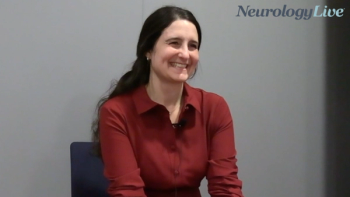
Considerations When Diagnosing SMA
James Wymer, MD, FAAN: The term later-onset disease is a bit wrong because these are genetic diseases. By their very nature, they start when you’re born and are present your whole life. It’s just that in later-onset disease, you have enough spare copies of the gene so you can delay that onset until later in life. Again, when you have more copies, it’s going to be slower and gradual in its decline. You’re still going to get the same presentation. That is, the weakness in the muscle, difficulty running, and difficulty getting up the stairs.
You may have problems reaching something on the top shelf in your kitchen cabinet because of shoulder weakness. It will present more with that. It will be milder. They’re less likely to have as much of the swallowing or speech changes as someone who’s younger. But these things can be there, and they can be disabling and need to be treated.
The age and onset is a function of the type. We had talked about the type 1 patients who can present at birth. In type 2 disease, you start seeing it at 6 months. When you start getting to the type 3s and 4s, they can present as late as 16 or 20 years of age. There are some patients who have been reported to present at 30 or 40 years old with type 4 disease, where they have enough of the SMN2 that it can compensate and it doesn’t occur later in life. These patients can present at any age with SMA [spinal muscular atrophy]. When it presents earlier, it means it’s more severe.
Tim Hagenacker, MD: The later the symptoms occur, the broader the differential diagnosis. You have other motor neuron diseases, like familial forms of amyotrophic lateral sclerosis, which has to be considered when proximal tetraparesis occurs. On the other hand, in the early onset forms, you also have to think about congenital myopathies, which may have similar symptoms. That’s the reason why the genetic testing is so important.
For an experienced child neurologist, diagnosis is typically not that difficult, because during childhood, SMA is 1 of the most common forms of neuromuscular disease, especially when severe tetraparesis occurs. During adulthood, it can take some time—probably years—If patients don’t have access to a neuromuscular expert center.
Newsletter
Keep your finger on the pulse of neurology—subscribe to NeurologyLive for expert interviews, new data, and breakthrough treatment updates.



































